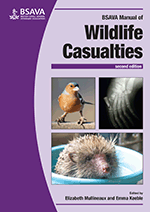
Full text loading...

The majority of bats presented as wildlife casualties are common pipistrelle bats, soprano pipistrelle bats and brown long-eared bats. The last 50 years has seen dramatic declines in the British bat population: habitat and agricultural intensification are the likely major causes. Trauma and infectious diseases are two of the main reasons a bat may be presented to a veterinary clinic. This chapter covers: ecology and biology; anatomy and physiology; capture, handling and transportation; clinical assessment; first aid and hospitalization; anaesthesia and analgesia; specific conditions; therapeutics; husbandry; rearing of bat pups; rehabilitation and release; and legal considerations.
Bats, Page 1 of 1
< Previous page | Next page > /docserver/preview/fulltext/10.22233/9781910443316/9781910443316.15-1.gif

Full text loading...














